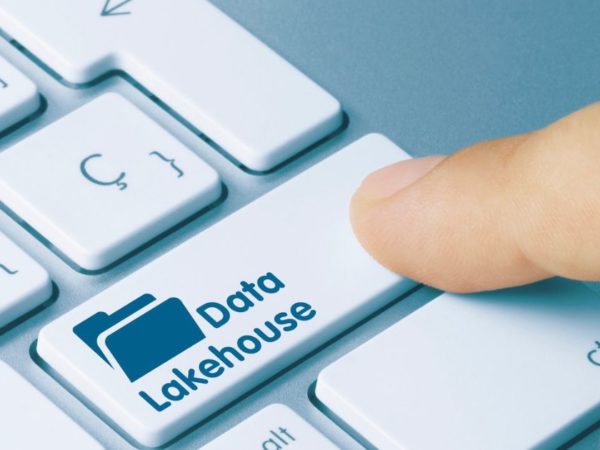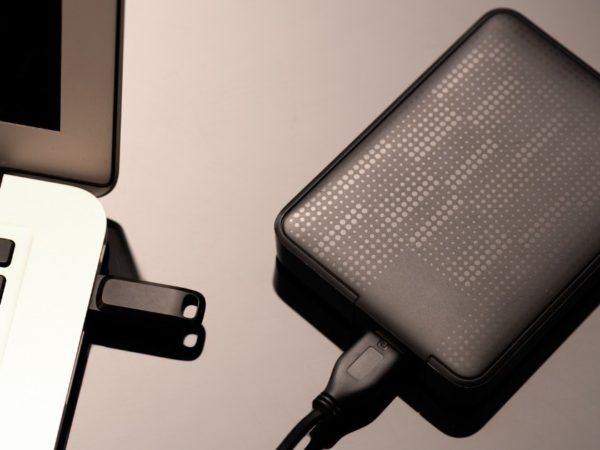DataFrames are a foundational data structure in R, offering the structure, versatility, and tools necessary for data analysis and manipulation. Their importance extends to various fields, including statistics, data science, and data-driven decision-making across industries.
DataFrames provide the structure and organization needed to unlock insights and make data-driven decisions in a systematic and efficient manner.
DataFrames in R is structured like tables, with rows and columns. Each row represents an observation, and each column represents a variable. This structure makes it easy to organize and work with data. DataFrames can hold various data types, including numbers, text, and dates, making them versatile.
In this article, I’ll explain the importance of data frames and discuss their creation using the data.frame() function.
Additionally, we’ll explore methods for manipulating data and cover how to create from CSV and Excel files, convert other data structures into data frames, and make use of the tibble library.
Here are some key reasons why DataFrames are crucial in R:
Importance of DataFrames
- Structured Data Storage: DataFrames provide a structured and tabular way to store data, much like a spreadsheet. This structured format simplifies data management and organization.
- Mixed Data Types: DataFrames can accommodate different data types within the same structure. You can have columns with numeric values, character strings, factors, dates, and more. This versatility is essential when working with real-world data.
- Data Organization: Each column in a DataFrame represents a variable, while each row represents an observation or case. This structured layout makes it easy to understand the data’s organization, improving data clarity.
- Data Import and Export: DataFrames support easy data import and export from various file formats like CSV, Excel, and databases. This feature streamlines the process of working with external data sources.
- Interoperability: DataFrames are widely supported by R packages and functions, ensuring compatibility with other statistical and data analysis tools and libraries. This interoperability allows for seamless integration into the R ecosystem.
- Data Manipulation: R offers a rich ecosystem of packages, with “
dplyr” being a standout example. These packages make it easy to filter, transform, and summarize data using DataFrames. This capability is crucial for data cleaning and preparation.
- Statistical Analysis: DataFrames are the standard data format for many statistical and data analysis functions in R. You can perform regression, hypothesis testing, and many other statistical analyses efficiently using DataFrames.
- Visualization: R’s data visualization packages like
ggplot2work seamlessly with DataFrames. This makes it straightforward to create informative charts and graphs for data exploration and communication.
- Data Exploration: DataFrames facilitate the exploration of data through summary statistics, visualization, and other analytical methods. This helps analysts and data scientists understand the data’s characteristics and detect patterns or outliers.
How to Create DataFrame in R
There are several ways to create a DataFrame in R. Here are some of the most common methods:
#1. Using data.frame() function
# Load the necessary library if not already loaded
if (!require("dplyr")) {
install.packages("dplyr")
library(dplyr)
}
# install.packages("dplyr")
library(dplyr)
# Set a seed for reproducibility
set.seed(42)
# Create a sample sales DataFrame with real product names
sales_data <- data.frame(
OrderID = 1001:1010,
Product = c("Laptop", "Smartphone", "Tablet", "Headphones", "Camera", "TV", "Printer", "Washing Machine", "Refrigerator", "Microwave Oven"),
Quantity = sample(1:10, 10, replace = TRUE),
Price = round(runif(10, 100, 2000), 2),
Discount = round(runif(10, 0, 0.3), 2),
Date = sample(seq(as.Date('2023-01-01'), as.Date('2023-01-10'), by="days"), 10)
)
# Display the sales DataFrame
print(sales_data)
Let’s understand what will our code do:
- It first checks if the “
dplyr” library is available in the R environment. - If “dplyr” is not available, it installs and loads the library.
- Then, it sets a random seed for reproducibility.
- Next, it creates a sample sales DataFrame with our filled data.
- Finally, it displays the sales DataFrame in the console for viewing.
This is one of the simplest ways to create a DataFrame in R. We will also explore how to extract, add, delete, and select specific columns or rows, as well as how to summarize data.
Extract Columns
There are two methods to extract the necessary columns from our dataframe:
- To retrieve the last three columns of a DataFrame in R, you can use indexing.
- You can extract columns from a DataFrame using the
$ operatorwhen you want to access individual columns by name.
We’ll see both together to save time:
# Extract the last three columns (Discount, Price, and Date) from the sales_data DataFrame
last_three_columns <- sales_data[, c("Discount", "Price", "Date")]
# Display the extracted columns
print(last_three_columns)
############################################# OR #########################################################
# Extract the last three columns (Discount, Price, and Date) using the $ operator
discount_column <- sales_data$Discount
price_column <- sales_data$Price
date_column <- sales_data$Date
# Create a new DataFrame with the extracted columns
last_three_columns <- data.frame(Discount = discount_column, Price = price_column, Date = date_column)
# Display the extracted columns
print(last_three_columns)
You can extract necessary columns using any of these codes.
You can extract rows from a DataFrame in R using various methods. Here is a simple way to do it:
# Extract specific rows (rows 3, 6, and 9) from the last_three_columns DataFrame
selected_rows <- last_three_columns[c(3, 6, 9), ]
# Display the selected rows
print(selected_rows)
You can use specified conditions also:
# Extract and arrange rows that meet the specified conditions
selected_rows %
filter(Discount 100, format(Date, "%Y-%m") == "2023-01") %>%
arrange(OrderID) %>%
select(Discount, Price, Date)
# Display the selected rows
print(selected_rows)Add New Row
To add a new row to an existing DataFrame in R, you can use the rbind() function:
# Create a new row as a data frame
new_row <- data.frame(
OrderID = 1011,
Product = "Coffee Maker",
Quantity = 2,
Price = 75.99,
Discount = 0.1,
Date = as.Date("2023-01-12")
)
# Use the rbind() function to add the new row to the DataFrame
sales_data <- rbind(sales_data, new_row)
# Display the updated DataFrame
print(sales_data)
Add New Column
You can add columns in your DataFrame with simple code. Here, I want to add the Payment Method column to my Data.
# Create a new column "PaymentMethod" with values for each row
sales_data$PaymentMethod <- c("Credit Card", "PayPal", "Cash", "Credit Card", "Cash", "PayPal", "Cash", "Credit Card", "Credit Card", "Cash", "Credit Card")
# Display the updated DataFrame
print(sales_data)
Delete Rows
If you want to delete unnecessary rows, this method could be helpful:
# Identify the row to be deleted by its OrderID
row_to_delete <- sales_data$OrderID == 1010
# Use the identified row to exclude it and create a new DataFrame
sales_data <- sales_data[!row_to_delete, ]
# Display the updated DataFrame without the deleted row
print(sales_data)
Delete Columns
You can delete a column from a DataFrame in R using the dplyr package.
# install.packages("dplyr")
library(dplyr)
# Remove the "Discount" column using the select() function
sales_data % select(-Discount)
# Display the updated DataFrame without the "Discount" column
print(sales_data)Obtain Summary
To obtain a summary of your data in R, you can use the summary() function. This function provides a quick overview of the central tendencies and distribution of numerical variables in your data.
# Obtain a summary of the data
data_summary <- summary(sales_data)
# Display the summary
print(data_summary)
These are the several steps you can follow to manipulate your data within a DataFrame.
Let’s move on to the second method to create a DataFrame.
#2. Create a R DataFrame from CSV File
To create an R DataFrame from a CSV file, you can use the read.csv()
# Read the CSV file into a DataFrame
df <- read.csv("my_data.csv")
# View the first few rows of the DataFrame
head(df)This function reads the data from a CSV file and converts it. You can then work with the data in R as needed.
# Install and load the readr package if not already installed
if (!requireNamespace("readr", quietly = TRUE)) {
install.packages("readr")
}
library(readr)
# Read the CSV file into a DataFrame
df <- read_csv("data.csv")
# View the first few rows of the DataFrame
head(df)
you can use the readr package to read a CSV file in R. The read_csv() function from the readr package is commonly used for this purpose. It is faster than the regular method.
#3. Using as.data.frame() Function
You can create a DataFrame in R using the as.data.frame() function. This function allows you to convert other data structures, such as matrices or lists, into a DataFrame.
Here’s how to use it:
# Create a nested list to represent the data
data_list <- list(
OrderID = 1001:1011,
Product = c("Laptop", "Smartphone", "Tablet", "Headphones", "Camera", "TV", "Printer", "Washing Machine", "Refrigerator", "Microwave Oven", "Coffee Maker"),
Quantity = c(1, 5, 1, 9, 10, 4, 2, 10, 1, 8, 2),
Price = c(1875.88, 585.31, 978.36, 1886.03, 1958.63, 323.23, 1002.49, 1164.63, 1817.66, 363.55, 75.99),
Discount = c(0.3, 0.28, 0.02, 0.15, 0.12, 0.27, 0.13, 0.25, 0.22, 0.24, 0.1),
Date = as.Date(c("2023-01-08", "2023-01-03", "2023-01-02", "2023-01-01", "2023-01-10", "2023-01-09", "2023-01-05", "2023-01-06", "2023-01-04", "2023-01-07", "2023-01-12")),
PaymentMethod = c("Credit Card", "PayPal", "Cash", "Credit Card", "Cash", "PayPal", "Cash", "Credit Card", "Credit Card", "Cash", "Credit Card")
)
# Convert the nested list to a DataFrame
sales_data <- as.data.frame(data_list)
# Display the DataFrame
print(sales_data)
This method allows you to create a DataFrame without specifying each column one by one and is particularly useful when you have a large amount of data.
#4. From the existing Data Frame
To create a new DataFrame by selecting specific columns or rows from an existing DataFrame in R, you can use square brackets [] for indexing. Here’s how it works:
# Select rows and columns
sales_subset <- sales_data[c(1, 3, 4), c("Product", "Quantity")]
# Display the selected subset
print(sales_subset)
In this code, we’re creating a new DataFrame called sales_subset, which contains specific rows (1, 3, and 4) and specific columns (“Product” and “Quantity”) from the sales_data.
You can adjust the row and column indices and names to select the data you need.
#5. From Vector
A vector is a one-dimensional data structure in R that consists of elements of the same data type, including logical, integer, double, character, complex, or raw.
On the other hand, an R DataFrame is a two-dimensional structure designed to store data in a tabular format with rows and columns. There are various methods to create an R DataFrame from a vector, and one such example is provided below.
# Create vectors for each column
OrderID <- 1001:1011
Product <- c("Laptop", "Smartphone", "Tablet", "Headphones", "Camera", "TV", "Printer", "Washing Machine", "Refrigerator", "Microwave Oven", "Coffee Maker")
Quantity <- c(1, 5, 1, 9, 10, 4, 2, 10, 1, 8, 2)
Price <- c(1875.88, 585.31, 978.36, 1886.03, 1958.63, 323.23, 1002.49, 1164.63, 1817.66, 363.55, 75.99)
Discount <- c(0.3, 0.28, 0.02, 0.15, 0.12, 0.27, 0.13, 0.25, 0.22, 0.24, 0.1)
Date <- as.Date(c("2023-01-08", "2023-01-03", "2023-01-02", "2023-01-01", "2023-01-10", "2023-01-09", "2023-01-05", "2023-01-06", "2023-01-04", "2023-01-07", "2023-01-12"))
PaymentMethod <- c("Credit Card", "PayPal", "Cash", "Credit Card", "Cash", "PayPal", "Cash", "Credit Card", "Credit Card", "Cash", "Credit Card")
# Create the DataFrame using data.frame()
sales_data <- data.frame(
OrderID = OrderID,
Product = Product,
Quantity = Quantity,
Price = Price,
Discount = Discount,
Date = Date,
PaymentMethod = PaymentMethod
)
# Display the DataFrame
print(sales_data)
In this code, we create separate vectors for each column, and then we use the data.frame() function to combine these vectors into a DataFrame named sales_data.
This allows you to create a structured tabular data frame from individual vectors in R.
#6. From Excel File
To create a DataFrame by importing an Excel file in R, you can utilize third-party packages like readxl since the base R does not offer native support for reading CSV files. One such function for reading Excel files is read_excel().
# Load the readxl library
library(readxl)
# Define the file path to the Excel file
excel_file_path <- "your_file.xlsx" # Replace with the actual file path
# Read the Excel file and create a DataFrame
data_frame_from_excel <- read_excel(excel_file_path)
# Display the DataFrame
print(data_frame_from_excel)
This code will read the Excel file and store its data in an R DataFrame, allowing you to work with the data within your R environment.
#7. From Text File
You can employ the read.table() function in R to import a text file into a DataFrame. This function requires two essential parameters: the file name you wish to read and the delimiter that specifies how the fields in the file are separated.
# Define the file name and delimiter
file_name <- "your_text_file.txt" # Replace with the actual file name
delimiter <- "t" # Replace with the actual delimiter (e.g., "t" for tab-separated, "," for CSV)
# Use the read.table() function to create a DataFrame
data_frame_from_text <- read.table(file_name, header = TRUE, sep = delimiter)
# Display the DataFrame
print(data_frame_from_text)
This code will read the text file and create it in R, making it accessible for data analysis within your R environment.
#8. Using Tibble
To create it using the provided vectors and utilize the tidyverse library, you can follow these steps:
# Load the tidyverse library
library(tidyverse)
# Create a tibble using the provided vectors
sales_data <- tibble(
OrderID = 1001:1011,
Product = c("Laptop", "Smartphone", "Tablet", "Headphones", "Camera", "TV", "Printer", "Washing Machine", "Refrigerator", "Microwave Oven", "Coffee Maker"),
Quantity = c(1, 5, 1, 9, 10, 4, 2, 10, 1, 8, 2),
Price = c(1875.88, 585.31, 978.36, 1886.03, 1958.63, 323.23, 1002.49, 1164.63, 1817.66, 363.55, 75.99),
Discount = c(0.3, 0.28, 0.02, 0.15, 0.12, 0.27, 0.13, 0.25, 0.22, 0.24, 0.1),
Date = as.Date(c("2023-01-08", "2023-01-03", "2023-01-02", "2023-01-01", "2023-01-10", "2023-01-09", "2023-01-05", "2023-01-06", "2023-01-04", "2023-01-07", "2023-01-12")),
PaymentMethod = c("Credit Card", "PayPal", "Cash", "Credit Card", "Cash", "PayPal", "Cash", "Credit Card", "Credit Card", "Cash", "Credit Card")
)
# Display the created sales tibble
print(sales_data)
This code uses the tibble() function from the tidyverse library to create a tibble DataFrame named sales_data. The tibble format provides more informative printing compared to the default R data frame, as you mentioned.
How to Use DataFrames Efficiently in R
Using DataFrames efficiently in R is essential for data manipulation and analysis. DataFrames are a fundamental data structure in R and are typically created and manipulated using the data.frame function. Here are some tips for working efficiently:
- Before creating, make sure your data is clean and well-structured. Remove any unnecessary rows or columns, handle missing values, and ensure that data types are appropriate.
- Set appropriate data types for your columns (e.g., numeric, character, factor, date). This can improve memory usage and computation speed.
- Use indexing and subsetting to work with smaller portions of your data. The
subset()and[ ]operators are useful for this purpose.
- While
attach()anddetach()can be convenient, but they can also lead to ambiguity and unexpected behavior.
- R is highly optimized for vectorized operations. Whenever possible, use vectorized functions instead of loops for data manipulation.
- Nested loops can be slow in R. Instead of nested loops, try to use vectorized operations or apply functions like
lapplyorsapply.
- Large DataFrames can consume a lot of memory. Consider using
data.tableordtplyrpackages, which are more memory-efficient for larger datasets.
- R has a wide range of packages for data manipulation. Utilize packages like
dplyr,tidyr, anddata.tablefor efficient data transformations.
- Minimize the use of global variables, especially when working with multiple DataFrames. Use functions and pass DataFrames as arguments.
- When working with aggregate data, use the
group_by()andsummarize()functions indplyrto efficiently perform calculations.
- For large datasets, consider using parallel processing with packages like
parallelorforeachto speed up operations.
- When reading data into R, use functions like
readrordata.table::freadinstead of base R functions likeread.csvfor faster data import.
- For very large datasets, consider using database systems or specialized storage formats like Feather, Arrow, or Parquet.
By following these best practices, you can efficiently work with DataFrames in R, making your data manipulation and analysis tasks more manageable and faster.
Final Thoughts
Creating dataframes in R is straightforward, and there are various methods at your disposal. I’ve highlighted the importance of data frames and discussed their creation using the data.frame() function.
Additionally, we’ve explored methods for manipulating data and covered how to create from CSV and Excel files, convert other data structures into data frames, and make use of the tibble library.
You might interested in the best IDEs for R Programming.



